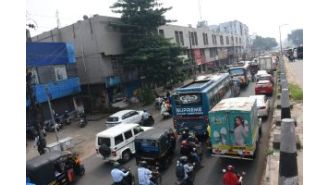Cuomo Still Underreporting the Total Count of COVID Nursing Home Deaths
The governor finally released data on nursing home cases after lawsuits and demands from lawmakers, but hundreds of presumed COVID-19 deaths have yet to be included in the state's official total.

Hundreds of COVID-19 deaths among New York state’s nursing home residents still have not been formally acknowledged by the administration of Gov. Andrew Cuomo, according to the Empire Center, a public policy think tank in Albany.
Bill Hammond, an analyst with the Empire Center, said recent state disclosures of all deaths of nursing home residents, whether they perished in their facilities or at local hospitals, to date failed to include more than 650 deaths of people presumed to have died of COVID-19.
Hammond said the state referenced the deaths in a footnote to its public data release, saying that it is still seeking to verify the official cause of death in those cases.
In Columbia County, for instance, at a nursing home that local health officials said had seen 18 residents die of COVID-19 in local hospitals, the state’s public tally today still just lists nine such deaths.
After months of requests from state lawmakers, subpoenas from Congress and a lawsuit by the Empire Center, the Cuomo administration in recent weeks had finally begun to concede that thousands more nursing home residents had died of COVID-19 than previously made public. When the administration last month announced totals of those nursing home residents who had died in hospitals, the number of overall deaths swelled by 50%, from some 8,000 to more than 12,000.
Today, as the virus continues to ravage New York, slightly more than 15,000 residents of nursing homes and other adult care facilities have died of COVID-19, more than in any other state. Roughly 13,000 of those were nursing home residents, close to 13% of the state’s nursing home population.
A Cuomo administration spokesman declined to respond to questions about the hundreds of still uncounted nursing home residents.
The true toll of nursing home deaths has been a controversy for the administration from the outset of the pandemic. For more than six months it has been criticized for failing to publicly count the deaths that occurred in hospitals. The administration’s policy allowing patients who had tested possible to be sent from hospitals to nursing homes already struggling to prevent the spread of the disease provoked outrage. The state’s largest union for nurses sued the Health Department for policies it said endangered front-line health care workers.
On Thursday, Melissa DeRosa, Cuomo’s most senior adviser on the pandemic response, apologized to lawmakers for the delays in making basic death data available, saying the administration was worried the death tolls would arm Republicans in Washington in what it regarded as a political vendetta against the governor. The admission shocked lawmakers, who said it was no excuse for withholding information vital to the public’s understanding of the pandemic’s true toll.
Ron Kim, the Democratic chairman of the State Assembly’s Committee on Aging, said he and others almost didn’t believe what they had heard.
“They should not be apologizing to us,” Kim said, “they should be apologizing to the people of New York.”
DeRosa’s remarks, made in an online meeting with lawmakers and administration officials and reported first by the New York Post, set off calls for resignations and a criminal inquiry.
Peter Ajemian, an administration spokesman, suggested DeRosa’s remarks should not be taken out of context. He argued that the administration had made clear to lawmakers last summer that the data on hospital deaths was difficult to verify and pull together, and that releasing unconfirmed deaths in a partisan political moment was fraught. He suggested the state had intended to get the work done on hospital deaths by the fall, but the second wave of infections had made that impractical.
A wide range of lawmakers and health experts have long derided the administration’s claims that counting COVID-19 deaths at hospitals was complicated, and they note that the administration had been doing just that in the early days of the pandemic.
“They could have disclosed the raw data on hospital deaths of nursing home residents with the caution that work needed to be done to verify official totals,” Kim said.
“They could have done that at any time, at the start, in the early months, well before Republicans were calling for them to,” he added. “But they wanted to hide bad news. They wanted to control or change the narrative of the state’s performance.”
In an interview, Hammond described months of legal combat with the administration to make the hospital deaths public. In the end, a state judge ordered the administration to answer Hammond’s freedom of information requests.
“I still don’t think this is everything,” he said of the administration data releases to date.
For instance, Hammond said the state has still not released the dates and facility names of close to 1,000 COVID-19 deaths involving residents of adult care facilities other than nursing homes. The numbers of those residents known to have died of COVID-19 jumped from 219 to close to 1,800 when the state released its data on hospital deaths.
Hammond said the failure to make public the dates and locations of the deaths handicapped efforts to better understand how the pandemic’s toll unfolded over time and across the state.






